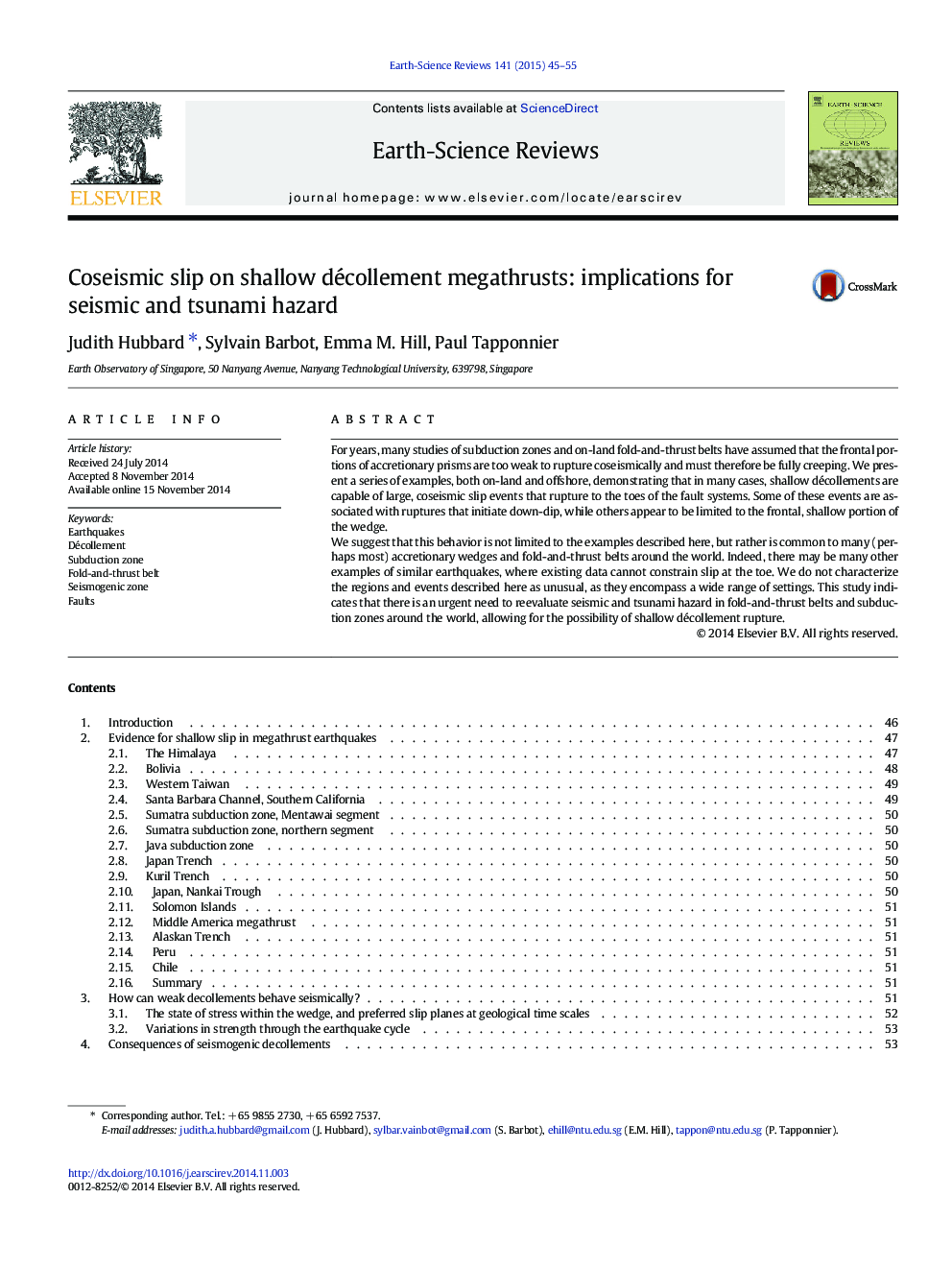| Article ID | Journal | Published Year | Pages | File Type |
|---|---|---|---|---|
| 4725812 | Earth-Science Reviews | 2015 | 11 Pages |
For years, many studies of subduction zones and on-land fold-and-thrust belts have assumed that the frontal portions of accretionary prisms are too weak to rupture coseismically and must therefore be fully creeping. We present a series of examples, both on-land and offshore, demonstrating that in many cases, shallow décollements are capable of large, coseismic slip events that rupture to the toes of the fault systems. Some of these events are associated with ruptures that initiate down-dip, while others appear to be limited to the frontal, shallow portion of the wedge.We suggest that this behavior is not limited to the examples described here, but rather is common to many (perhaps most) accretionary wedges and fold-and-thrust belts around the world. Indeed, there may be many other examples of similar earthquakes, where existing data cannot constrain slip at the toe. We do not characterize the regions and events described here as unusual, as they encompass a wide range of settings. This study indicates that there is an urgent need to reevaluate seismic and tsunami hazard in fold-and-thrust belts and subduction zones around the world, allowing for the possibility of shallow décollement rupture.
